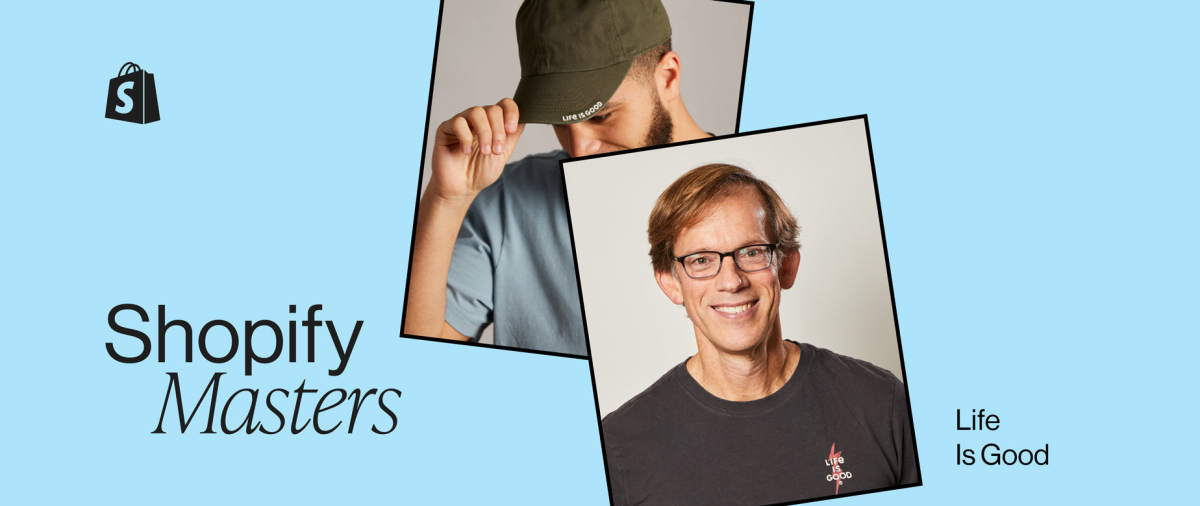Sustainability has been a buzzword in business for many years now, yet climate-conscious entrepreneurs face a surprising number of challenges when it comes to building a sustainable product. Many industries have legacy manufacturers who have done things the same way for decades. The global nature of the supply chain can make domestic sourcing challenging.
But business owners who can solve the sustainability puzzle may be rewarded—not only with a decreased carbon footprint but also with access to a consumer segment that is willing to pay a premium for their offerings. Shopify research shows that 43% of shoppers are more likely to buy from brands with sustainable practices like carbon-neutral shipping. According to PricewaterhouseCoopers 2024 Voice of the Consumer survey, many consumers are also willing to pay more for sustainable products.
Below, three brands share how they incorporate sustainability into their business models, the challenges faced along the way, and their innovative solutions to drive responsible retail.
Innovating with recycled materials
Zachary Quinn spent his childhood on the banks of the St. Croix River, a tributary of the Mississippi River that ultimately flows into the Gulf of Mexico. It was here where he saw firsthand how “anything that is put in that river affects the whole world.” He grew up to become a serial entrepreneur, first cofounding a hat brand called Love Your Melon that donated money and beanies to children battling cancer.
After selling that business in 2022, he debated his next venture—and his carefree days near the water kept coming to mind. In February 2023 he developed a concept called Oceanfoam: a beautifully designed foam roller that would be made of plastic waste removed from the ocean.
But Zachary soon bumped up against a critical technical limitation: Recycled ocean plastic couldn’t be used in the injection molding process necessary for foam rollers. So he started researching, networking, and attending industry trade shows to identify an alternative and find the right partners.
Finally, Zachary was introduced to Bloom, a company producing algae-based materials that primarily worked with shoe brands.
Connect with manufacturers
Use this free email template to introduce your business to manufacturers, suppliers, and distributors to source the perfect products for your business.
Download template
The companies partnered to create a new innovation: a foam roller made up of 15% algae pellets and a core made from 80% recycled materials (excess left over from other companies’ manufacturing processes to make items like yoga mats and flip flops, which are then melted down).
Removing algae from the ecosystem is ultimately a good thing, since its overabundance can cause other plants and animals to die. “Algae also has protein-like characteristics where it helps bind with the plastic used with it, which actually makes our roller stronger and more durable,” Zachary says. “It wasn’t the ocean plastic I had initially planned for, but it turned out to be even better.”
To further improve Oceanfoam’s impact on the environment, the company partnered with Climate Partner for carbon offsetting. Oceanfoam does this primarily by funding clean drinking water systems in Laos.
“Instead of having to boil their water with fires to clean it, they get clean water filters—so it reduces the amount of carbon that goes into the atmosphere,” Zachary says. “By the end of 2024, our first full year, we achieved carbon-positive impact.”
Oceanfoam’s additional sustainability efforts include algae paper and ink for packaging, electric company vehicles, a solar-powered office, and a recycling program for returns. “Every single time we’ll pick the more sustainable option, because it’s inherently a part of Oceanfoam’s story,” Zachary says.
That story resonates with customers, thousands of whom have purchased rollers that range in price from $28 for a travel size to $68 for an extra large. The company is now developing pool noodles and other products that lean into the connection to the water.
“The name and branding of Oceanfoam attracts a certain type of customer who loves the planet and wants to be active and healthy,” Zachary says. “They want, and are willing to pay for, foam products that would otherwise not be made sustainably.”
Designing to reduce waste
When Phantila Phataraprasit moved to New York for law school, her primary concern was furnishing her small apartment, where, like many young adults, she was constrained by stairwell sizes, budget, and the likelihood that she would be moving again soon.
To her surprise, she struggled to find furniture that was both affordable and sustainable. “I wanted to purchase in accordance with my own values,” Phantila says. “When we started looking at the industry more, we saw how limited our options were, how wasteful the industry is, and wanted to create a solution for people like us.”
The furniture industry, especially affordable furniture, often uses synthetic, toxic, or other non-sustainable upholstery materials and produces excess inventory. Many of these pieces are manufactured internationally, increasing their carbon footprint. Plus, items aren’t designed for long-term use or repair. Young adults in particular move frequently, and when a piece of furniture doesn’t fit in their new space or gets damaged when moving, it’s often left behind.
Phantila mused over the issue with her friend and former classmate Caitlin Ellen. In time, they determined the issue wasn’t just personal—there was a massive market opportunity.
“Interest in sustainable products had grown across every industry, but for some reason, for furniture there wasn’t really an answer to that demand that we saw in our own generation,” Phantila says, “even as we were growing into a large portion of the population that was going to be making purchasing decisions.”
The opportunity was powerful enough that Phantila and Caitlin changed their career plans. In 2019 the pair founded Sabai Design. The goal was to sell sustainable couches, chairs, and more, all manufactured in the US with non-toxic, recycled, and natural materials.
Sabai uses natural materials including coconut fibers and natural rubber wherever possible—an innovation that is relatively new to the US market. Wood frames are coated with a water-based finish, and the furniture frames are assembled using a non-toxic, solvent-free glue. Items can also be repaired or resold through Sabai, and they’re designed to be modular—easily assembled and disassembled with standard hardware and tools.
Sabai faced a challenge in finding a manufacturer who would take on these unconventional requests. With nearly no industry connections, Phantila and Caitlin leaned on research: They cold-called manufacturers, asked friends for any connections, and attended industry trade shows, asking every new contact for advice and referrals. Eventually, through a product designer they hired via LinkedIn, they found a newer manufacturing outfit willing to work with natural materials and adopt atypical practices like making pieces to order rather than creating bulk inventory.
“The timing was really opportune because they wanted new business and were willing to try something new,” Phantila says.
While Phantila and Caitlin initially wanted 100% domestic sourcing for Sabai’s materials, this simply was not possible for some items like hemp. “It just was impossible to find anything near cost-effective for our demographic because the US hemp industry is not what it is elsewhere,” Phantila says. “We wanted to source every material domestically but had to be OK with getting a small percentage abroad.”
But beyond the alternative sustainable materials and metal hardware, Sabai’s furniture is made 100% in US factories that pay their workers a living wage. The company encourages repairs by offering replacements for parts that tend to get damaged or worn: slipcovers, seating arms, sofa legs, and more. And customers can sell items back to the company through its Sabai Revive resale platform to reduce waste and give furniture a second chance, keeping it out of landfills.
“Sabai had sustainability baked in from the onset, and setting that intention has been really helpful in guiding us,” Phantila says. “Not only is it difficult to steer the ship in another direction once it’s moving—but the bigger you get, the harder that becomes.”
Challenging overconsumption
Overconsumption is a major sustainability concern, and one of the biggest industry culprits is makeup. The beauty industry creates an estimated 120 billion units of plastic packaging annually, and consumers are noticing, with nearly half of consumers surveyed by plastic recovery organization CleanHub indicating that they’re paying closer attention to the sustainability of beauty products and their packaging.
Erika Geraerts founded Australian beauty brand Fluff with a radically different approach. Fluff opens its online store only four times a year for weeklong “drops” of refillable makeup products. The company’s compacts are made from zamak, a durable metal alloy mix designed to last for years, and all items are multi-use—like a color that can be used on the lips, cheeks, and eyes.
“We wanted to be a beauty brand that stood for the opposite of constant consumption,” Erika says on Shopify Masters.
Shopify Masters: The ecommerce podcast for ambitious entrepreneurs
Shopify Masters is a business podcast powered by Shopify where successful entrepreneurs and experts share their marketing and sales experience with inspirational stories.
Learn from leaders
Fluff’s focus on upending the overconsumption and overproduction in the beauty industry carries through their messaging and initiatives. This includes initiatives like Fluff Issues, an editorial platform that features written articles as well as customers’ reflections and photos. “Whereas most beauty brands might have typical beauty articles or features—like top shelves or what’s in your beauty bag or the five latest beauty trends—our issues are all about people’s concerns or feelings toward the beauty industry, or about themselves and their identity,” Erika says.
The brand has built a devoted community and grown sustainably over the past seven years. Erika says she focused on growing through customer retention and loyalty, instead of expanding product lines or increasing drop dates. Keeping drops limited also serves two purposes beyond sustainability: driving customer engagement and anticipation, and helping the brand forecast sales.
“A drop model, yes, is a marketing tactic in which we are trying to drive demand by restricting the availability of our products or limiting the time at which a customer can buy,” Erika says.
The setup also makes it possible for Fluff to slow down and focus on high-quality products. Fluff’s signature compacts cost $70, which is more than a typical plastic compact case.
“I’m not chasing that crazy growth that a lot of DTC brands chase … it means that we’re in it for the long haul,” she says. “If we can create something that doesn’t feel taxing on the business and our staff, and me as a founder, it is a lot easier to see it lasting for 10, 15, or even 20 years.”






